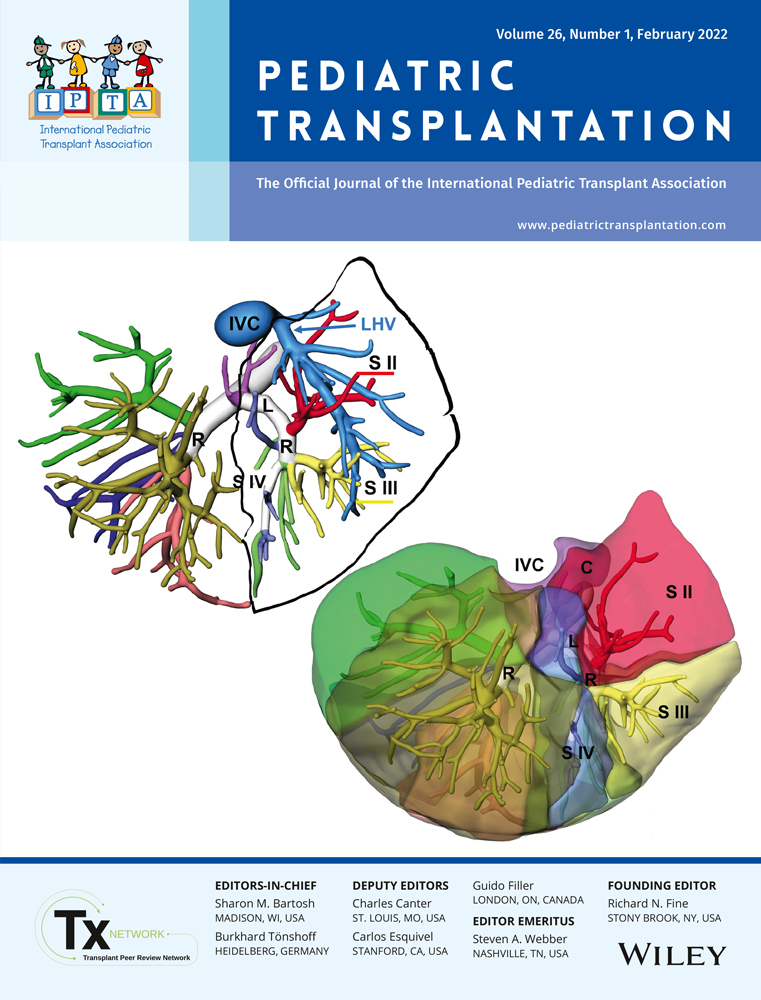Predictors of patient and graft survival following pediatric liver transplantation: Long-term analysis of more than 300 cases from single centre
Funding information
This research did not receive any specific grant from funding agencies in the public, commercial, or not-for-profit sectors
[Correction added on 28 September 2021, after first online publication: The name of the fourth author has been corrected to Marumbo Mtegha in this version.]
Abstract
Background
Pediatric liver transplant (PLT) activity has flourished over time although with limited expansion in the graft pool. The study aims to identify pre-transplant factors that predict post-transplant patient and graft survival in the PLT population.
Methods
Retrospective review of PLTs at a single tertiary transplant unit from 2000 to 2019. Univariate and multivariate analyses of pre-transplant factors were performed to identify predictors of patient and graft survival.
Results
Two hundred and seventy-six patients received 320 PLTs. The most common cause of graft loss was hepatic artery thrombosis (n = 13, 29.6%). The most common cause of mortality was sepsis (n = 11, 29.7%). Univariate analysis showed that the following variables had a significant (p < .05) impact on patient survival: recipient age, weight, height, graft type (technical variant graft), transplant category (acute liver failure), the era of transplant, and invasive ventilation. The following variables had a significant (p < .05) impact on graft survival: recipient age, weight, height, transplant category (acute liver failure), and the era of transplant. Multivariate analysis precluded the era of transplant as the only significant factor for patient survival; patients transplanted after 2005 had significantly higher patient survival. No independent factor predicting graft survival was identified. For children transplanted after 2005, the only factor that predicted patient survival was pre-transplant invasive ventilation.
Conclusions
Our study suggests that the learning curve and pre-transplant invasive ventilation in the recipient have a significant impact on patient survival. The traditional view of worse outcomes of smaller PLT candidates should be changed.
CONFLICTS OF INTEREST
The authors have no conflicts of interest to declare that are relevant to the content of this article.
Open Research
DATA AVAILABILITY STATEMENT
Available upon request.




